Design for Policymaking Workshops
Linh Phan
Project Overview
Government officials, legislators, and policymakers are increasingly exploring novel approaches to ensure that laws and policies prioritize the needs of individuals while enhancing the delivery of public services.

The Design for Policymaking Workshop Series is a collaboration between designers and the BC Government to introduce government officials to design thinking activities they can use to draft and create human-centred policies.
This initiative to bring Design thinking into the Policymaking process is a quick and low-cost but effective intervention that will give government officials new perspectives and understandings, increase a policy’s impact, equity and accessibility, offer creative and holistic solutions and strengthen communities and organizations.

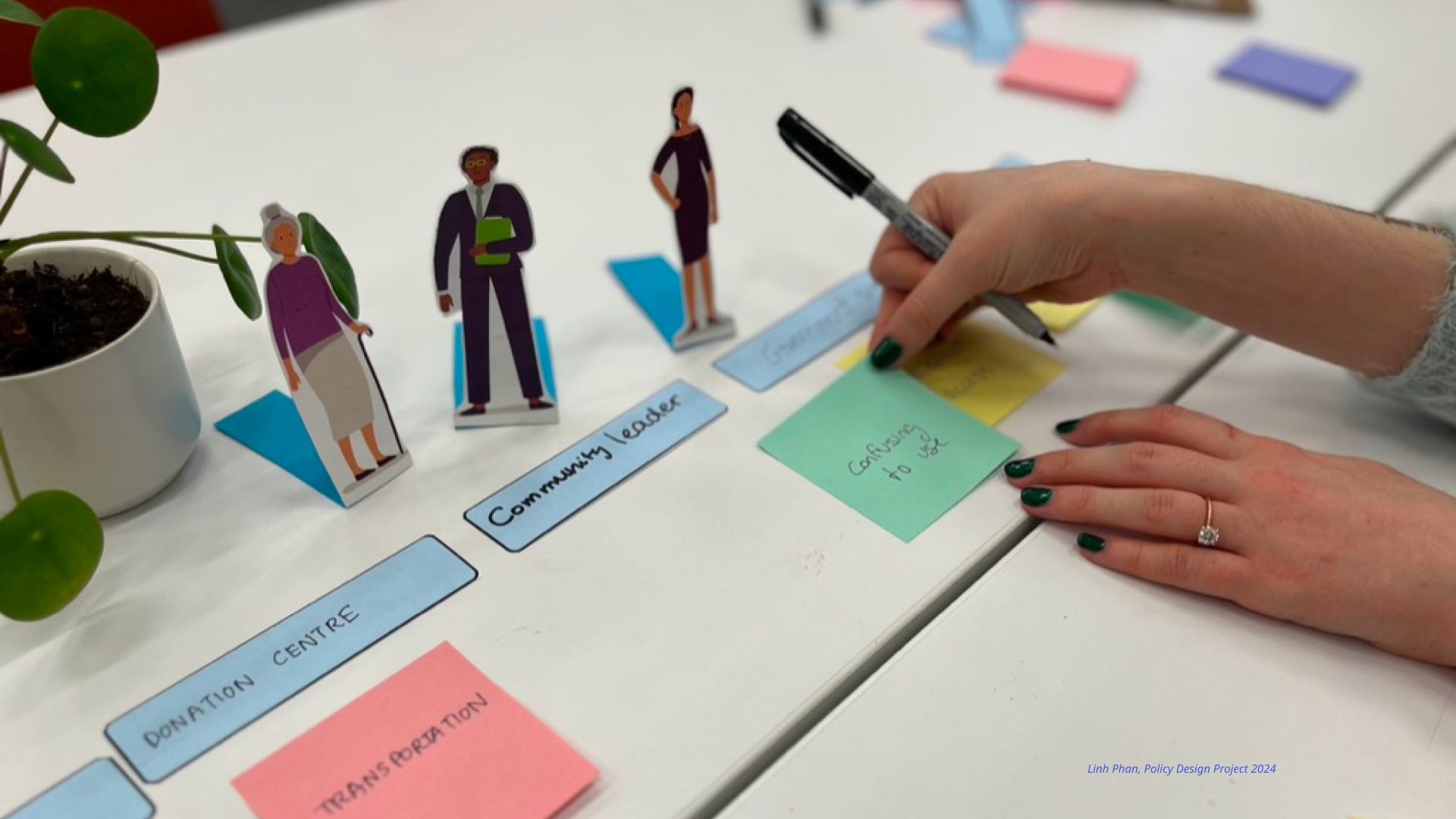
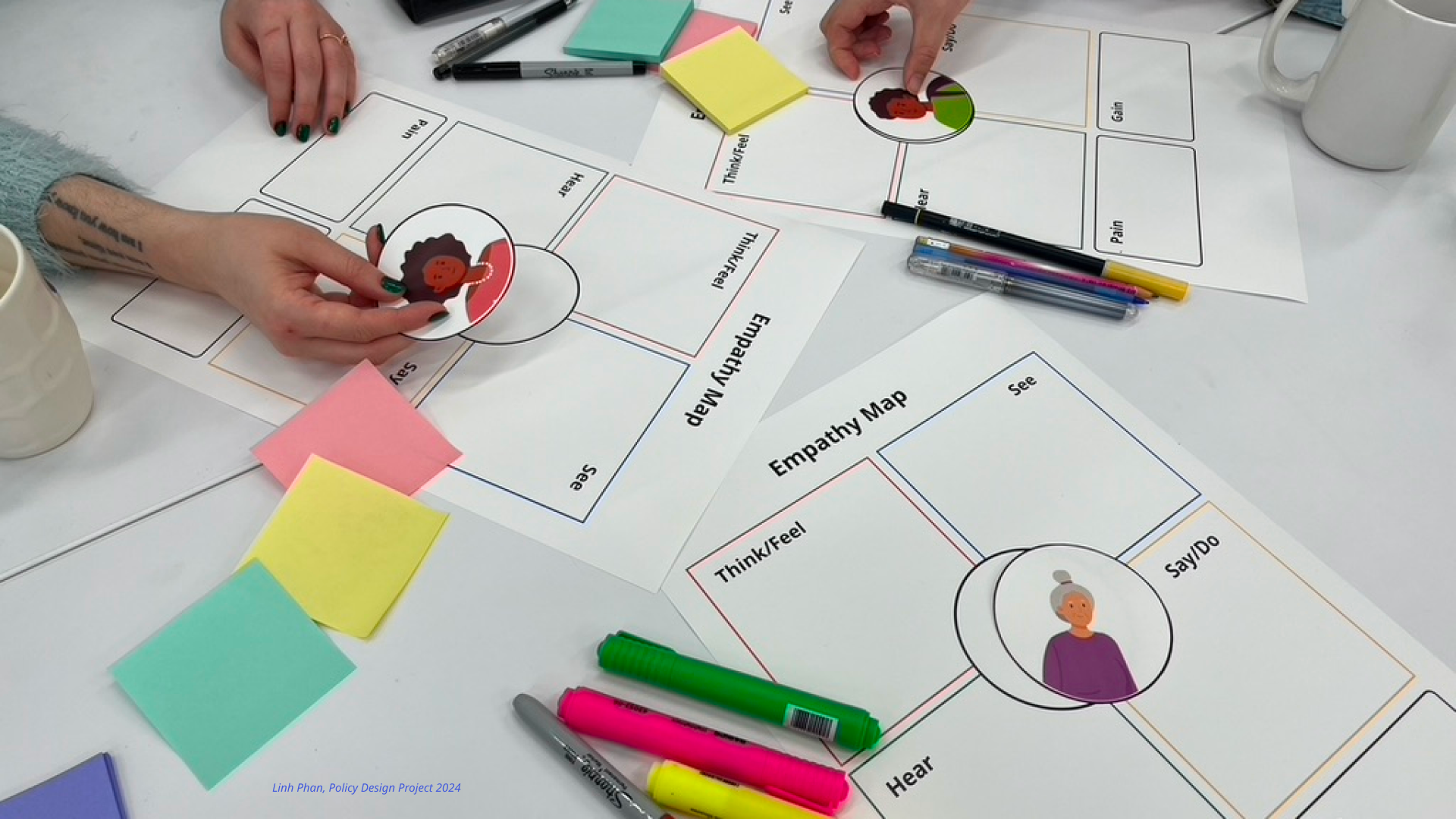
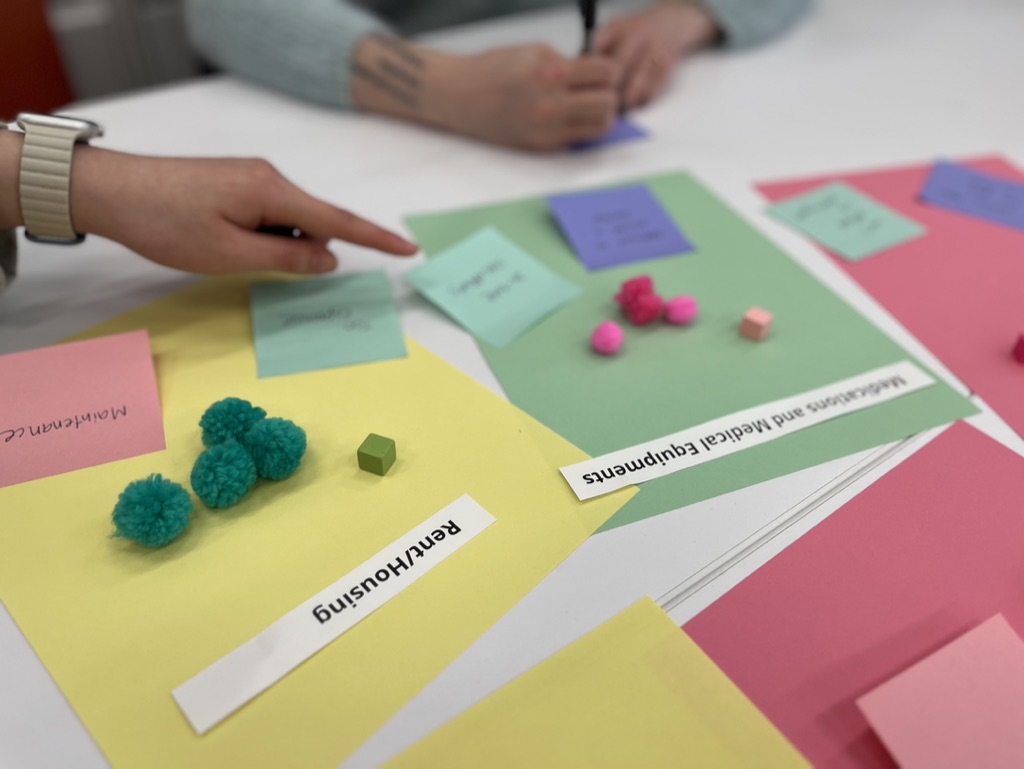
Define limitations
Human-centred policy prioritizes the needs, perspectives, and experiences of individuals and communities, ensuring that policies are designed and implemented with their well-being and interests at the forefront, ultimately fostering inclusivity, equity, and effectiveness in governance. One way to develop a more human-centred policy is to engage with the public and have their input during the policy-making process. However, this is often not possible due to the discrete nature of policy development.
During the Policy Cycle, the internal stages where a policy is drafted and created allow little to no external inputs such as the public.
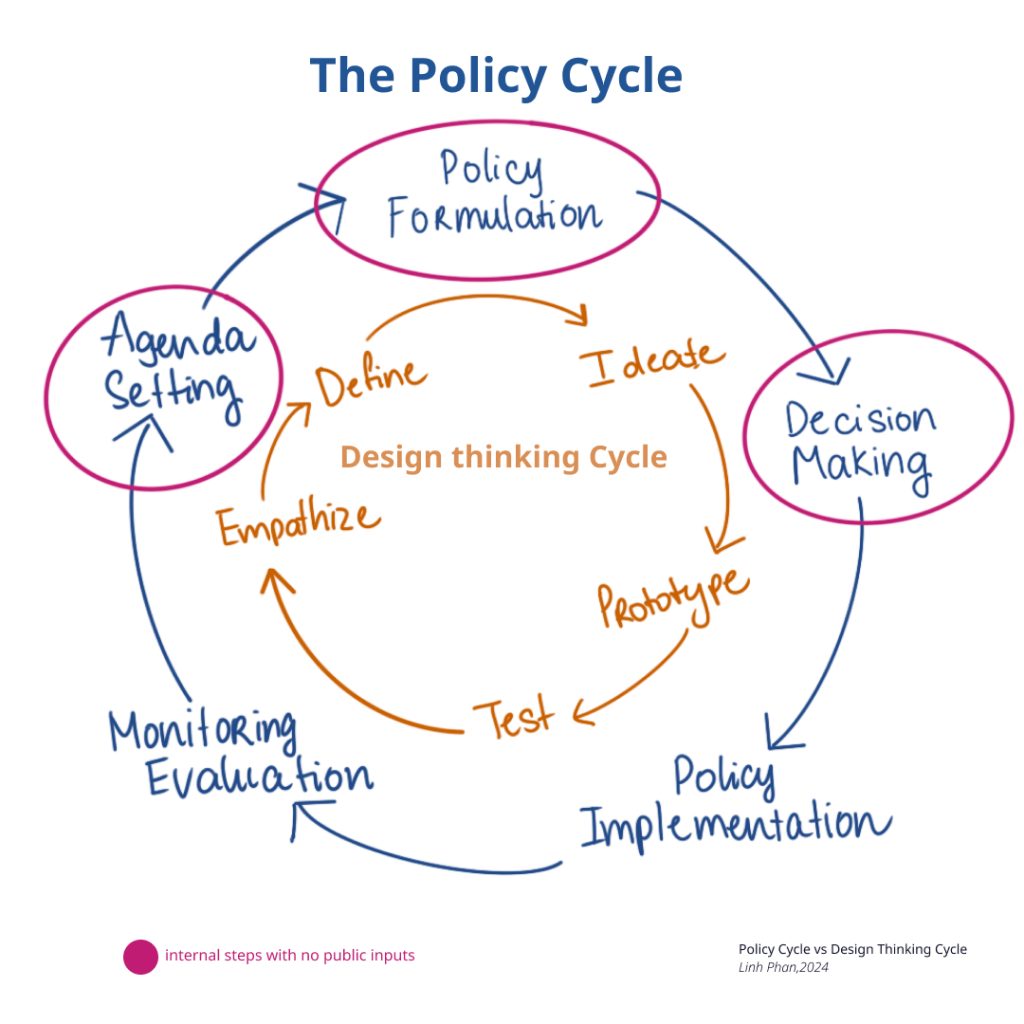
Considering this limitation, how may we promote a deeper understanding of communities and diverse perspectives within the internal steps, leading to better policy outcomes?

Design opportunities
Designers are experts in seeking to understand. We spend a large part of our design practice developing methodologies and using them to observe, listen, learn from the users and find insights into problems and opportunities.
Seeing that there are many similarities between the design process and policymaking, Policymakers can benefit from adopting design thinking in their work, as it empowers them to tackle complex issues with empathy, creativity, and iterative problem-solving.
It needs to start from the beginning: education. The workshop series will be the first step to introducing and inspiring government officials with design principles and simple methodologies suitable for policy-making.
Workshops Details
Let’s follow Amy’s journey to discover what the workshops entail!




In the Design for Policymaking Workshops, Amy and her colleagues will learn design principles and engage in various design exercises.

Workshop 1: Building Empathy
The first workshop in the series aims to challenge assumptions and biases during policy crafting, foster new perspectives and consider diverse perspectives. The activities include stakeholder mapping, identifying and empathy mapping.
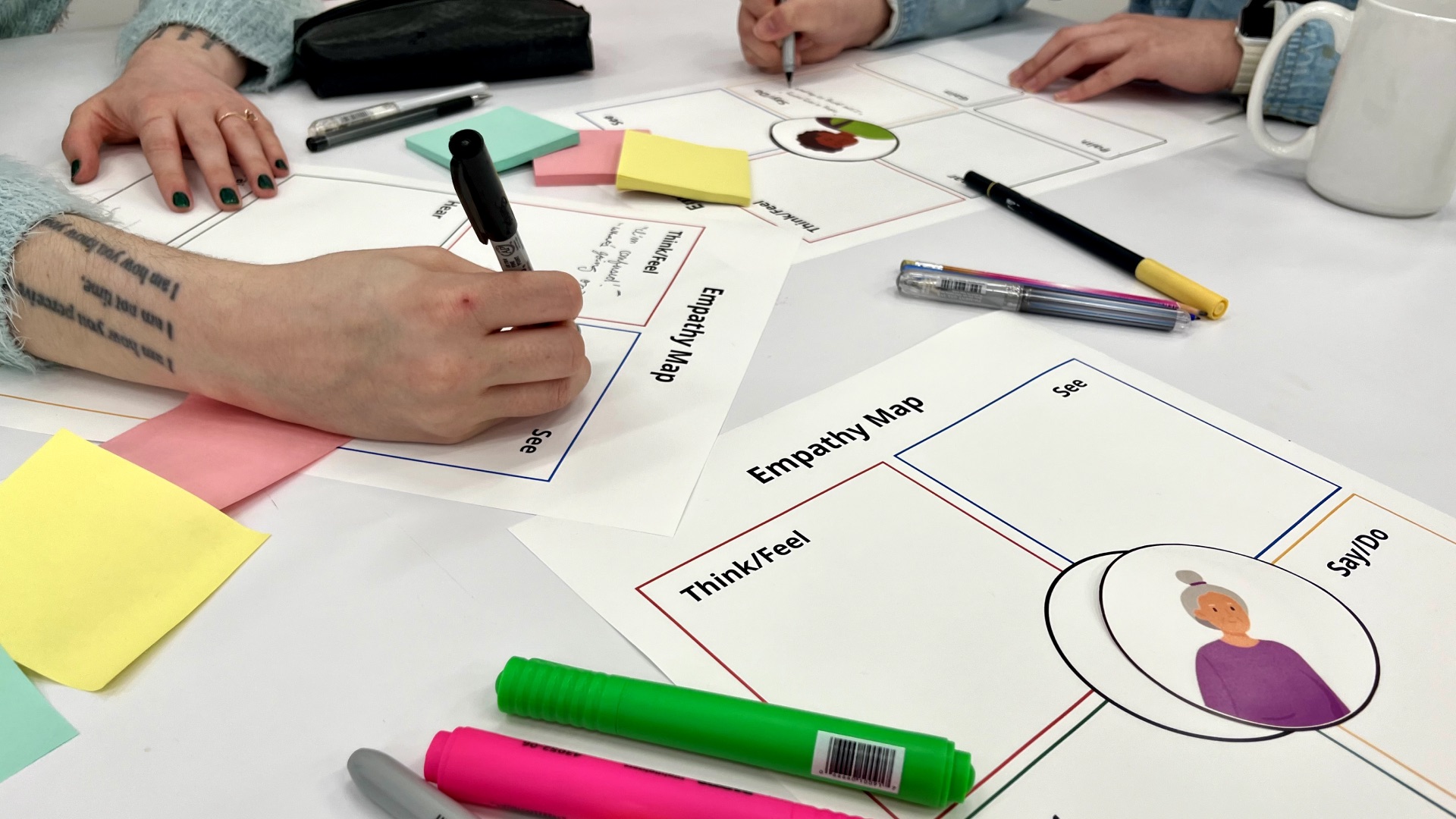
Workshop 2: In the Public’s Shoes
The second workshop introduces design prototyping methods that can be adopted in the policy space to quickly visualize and test future policy implementation plans, for example, a program or service. Methods such as Role Playing, Journey Mapping, Service Walk Through and Wireframing can assist with decision-making while prioritizing people’s experiences.
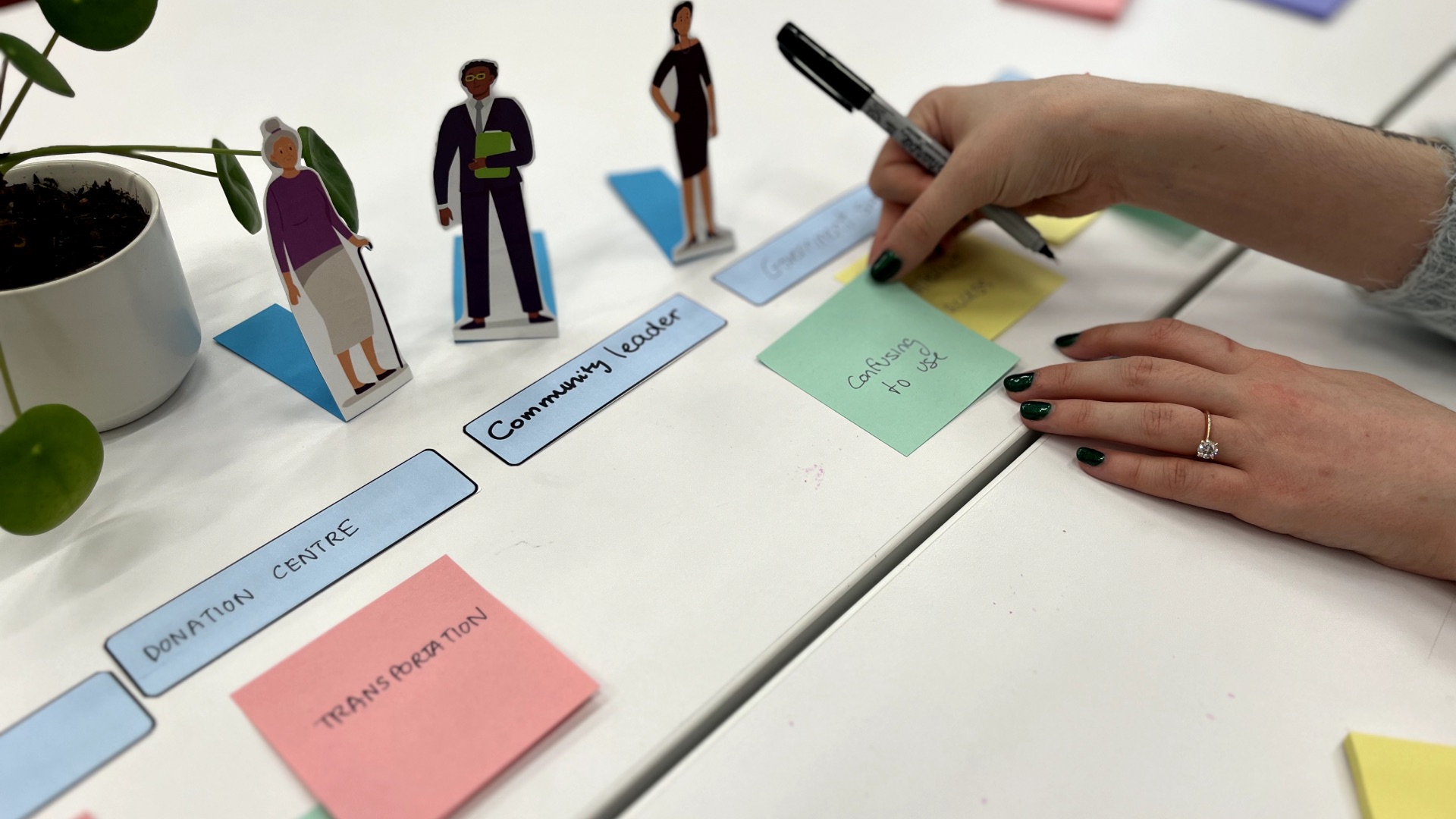
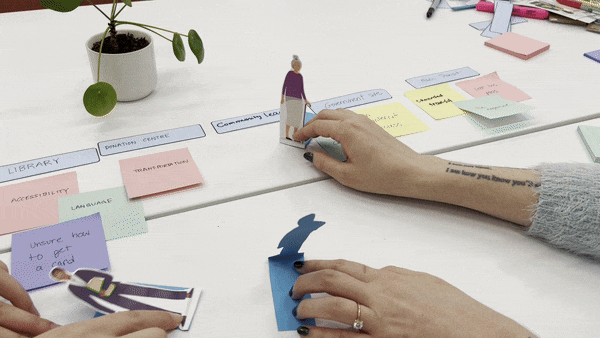
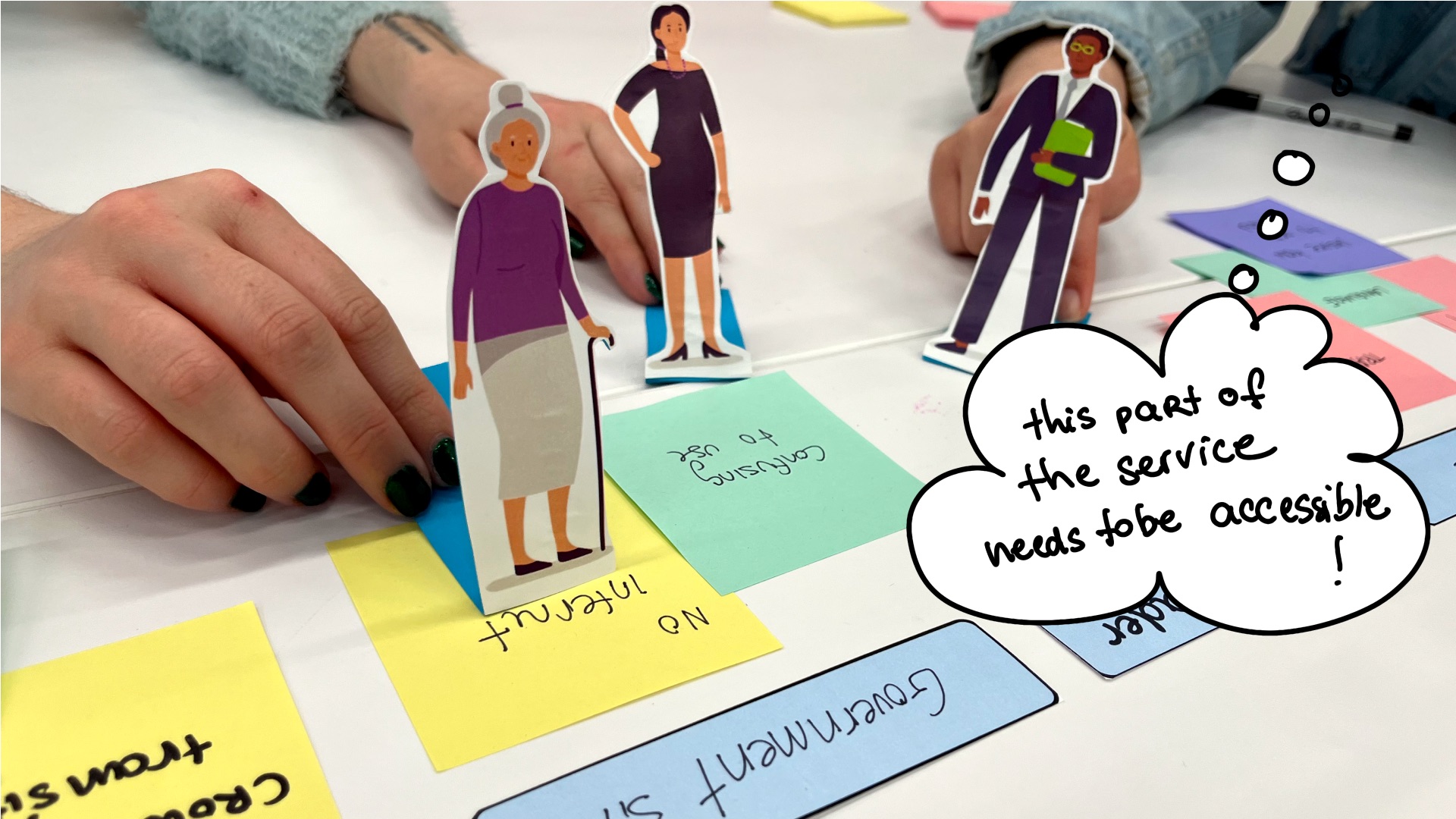
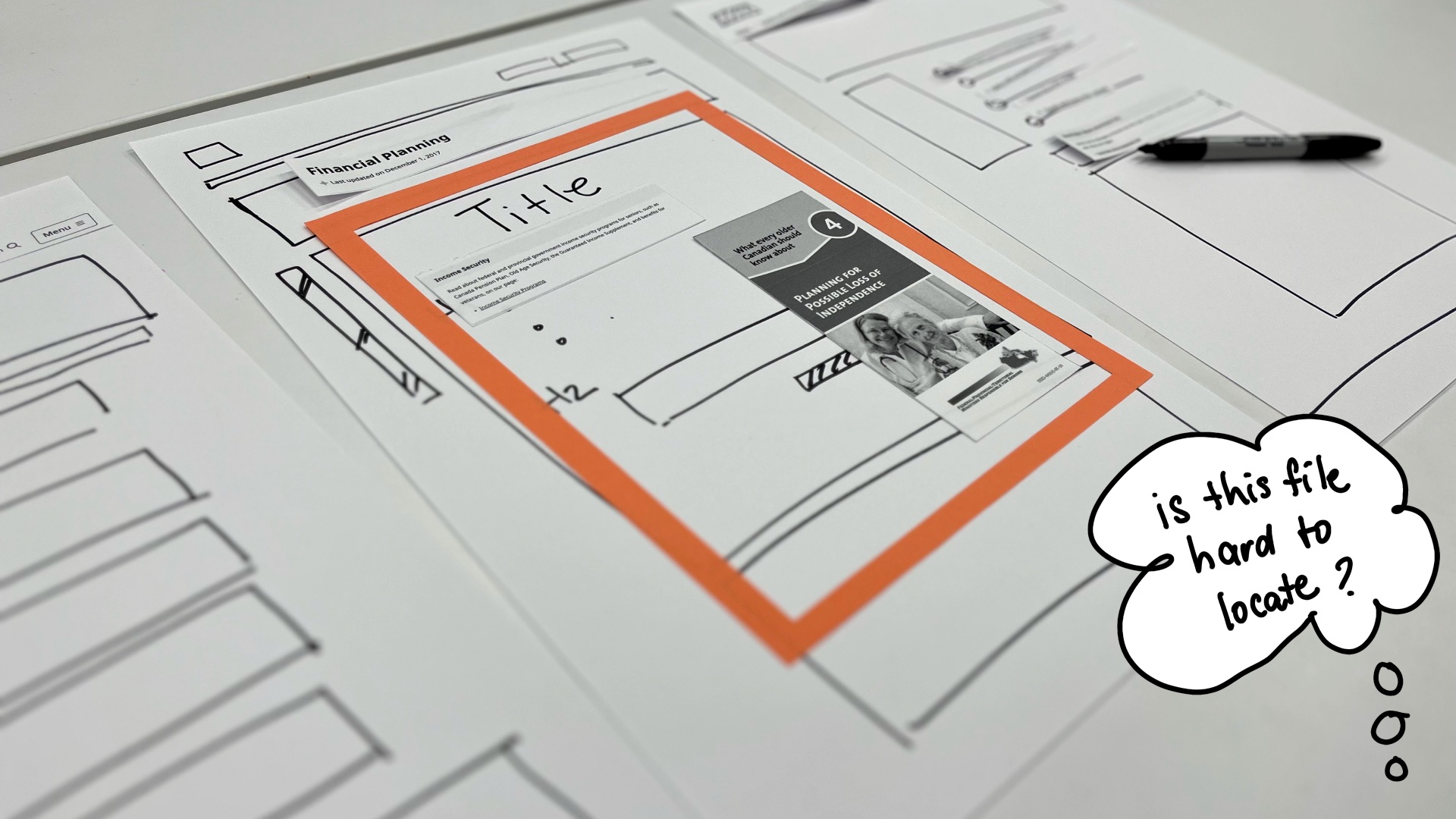
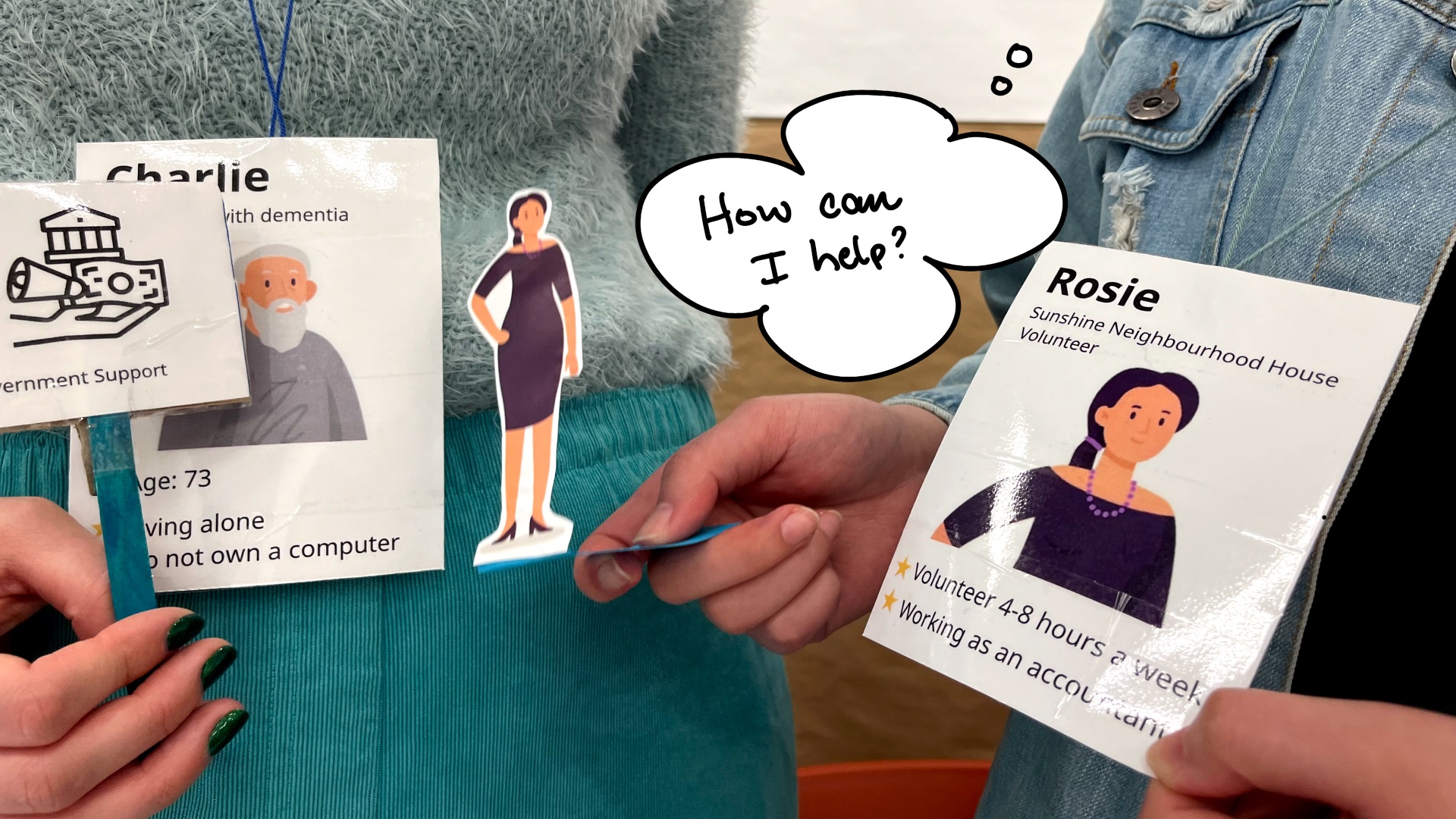
These are useful prototyping activities in design practice that will help policymakers simulate various perspectives and scenarios, fostering deeper understanding and informed decision-making.
Experimental methods like Roleplay are no strangers to building public services. For example, medical institutions have been using simulation-based medical teaching and learning, both low-fidelity and high-fidelity, for more effective learning.
Workshop 3: Co-Design for Policymaking
This last workshop in this series promotes collaboration and public engagement in policymaking. There is nothing that could replace the public’s input. Policymakers will try out an example co-design activity and learn facilitation tips to prepare them for their next step of public engagement during policy implementation when that is allowed.
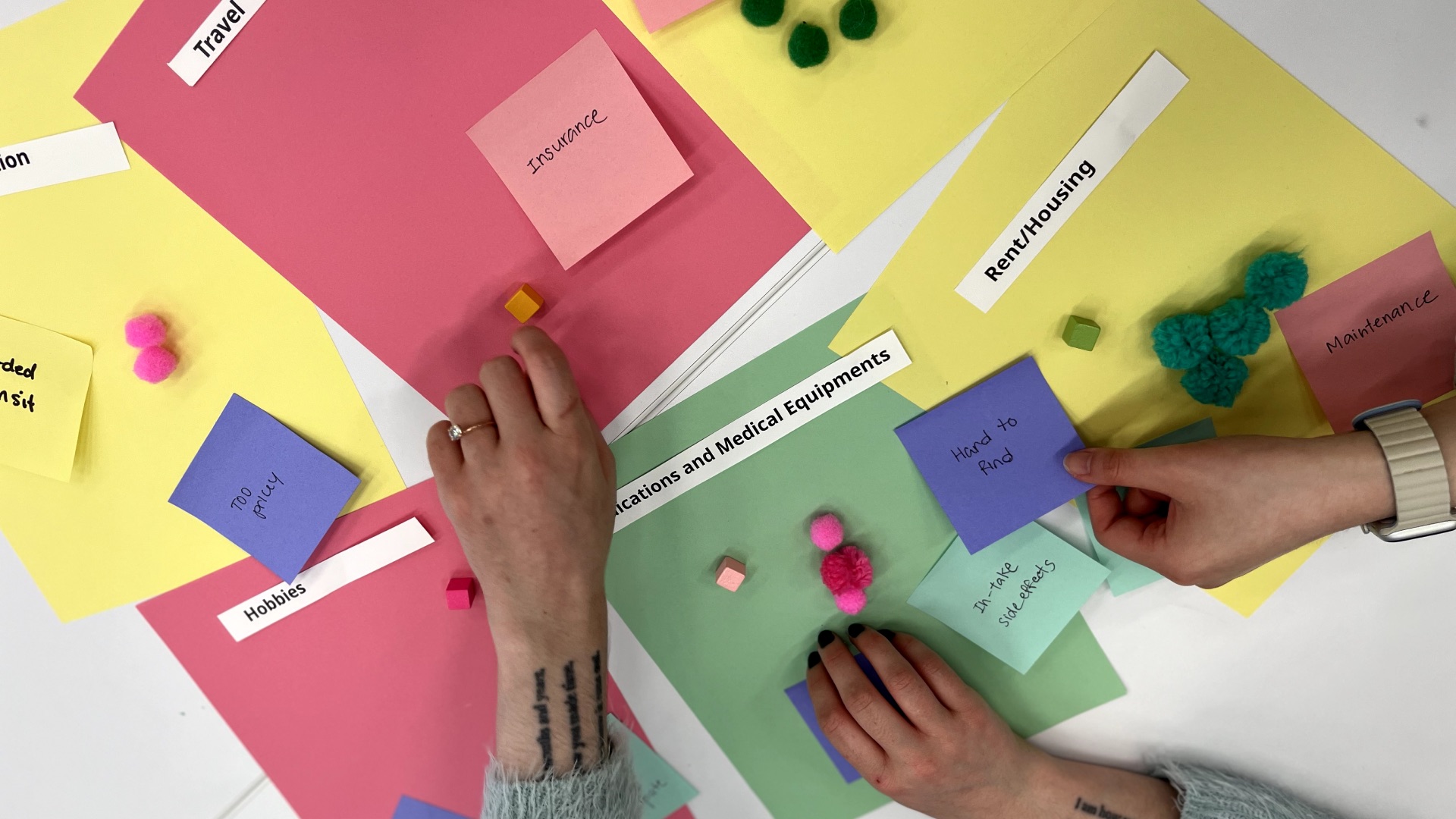
Workshops Outcomes
The goal of the workshops is not to turn policymakers into designers.
Through the workshop series, government workers understand better how design thinking principles can benefit their work process. They get to try these methods hands-on, have conversations with colleagues that reveal assumptions and gaps, examine different perspectives, and experiment with refreshing methods that are accessible, quick and low-cost. The result is more equitable, sustainable and impactful policies in the future.
After the workshops, they can access a resource hub full of information, examples and case studies on how governments and colleagues all around the world are bringing human-centred design principles into public policies.
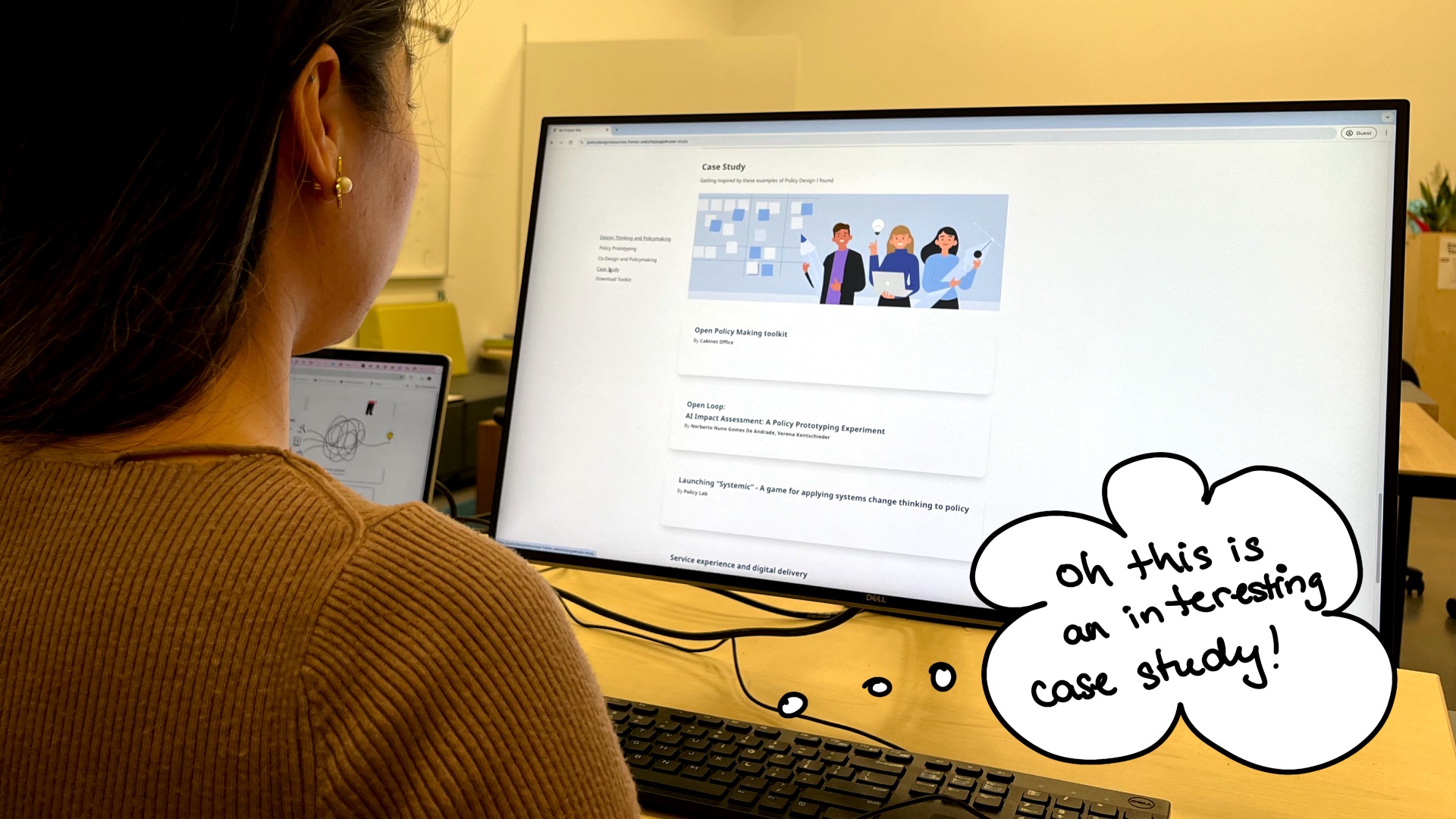
You can access the resource page here!
You will also find and download a toolkit in the resource hub to conceptualize these design methodologies in the policy space, making it easier for policymakers to bring them into their work and encourage usage in the future.
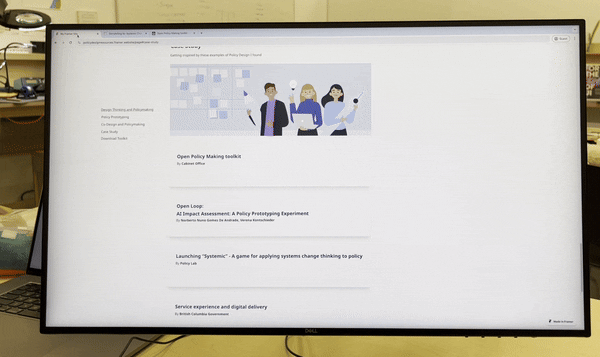
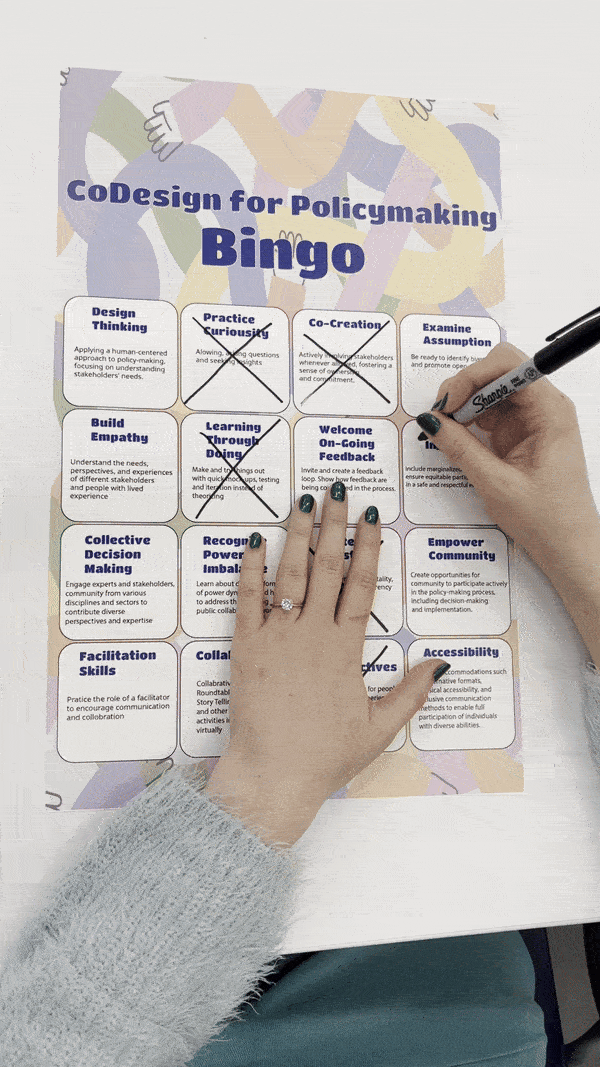
Project Reflection
The topic of integrating Design Thinking into Policy has many exciting opportunities to explore. This is just a small intervention that I was able to design within my scope of practice as an undergraduate student. But amazing organizations around the world such as the Stanford Legal Design Lab in California, Design Policy Lab, Milan or OXD in Vancouver have been doing this work for years to help governments improve their policies, programs, and in-person or digital services. As a future service designer who wishes to create systemic changes with my design practice, I am pleased to be able to explore this space in my capstone project which inspires me to carry on this work in the future.
Don’t want to read? Watch the project summary video here ( or both 🙂
Please note that this is not a REAL project of BC Government. Amy is a fictional government worker. Although I would love to see this project being carried out in real life.




